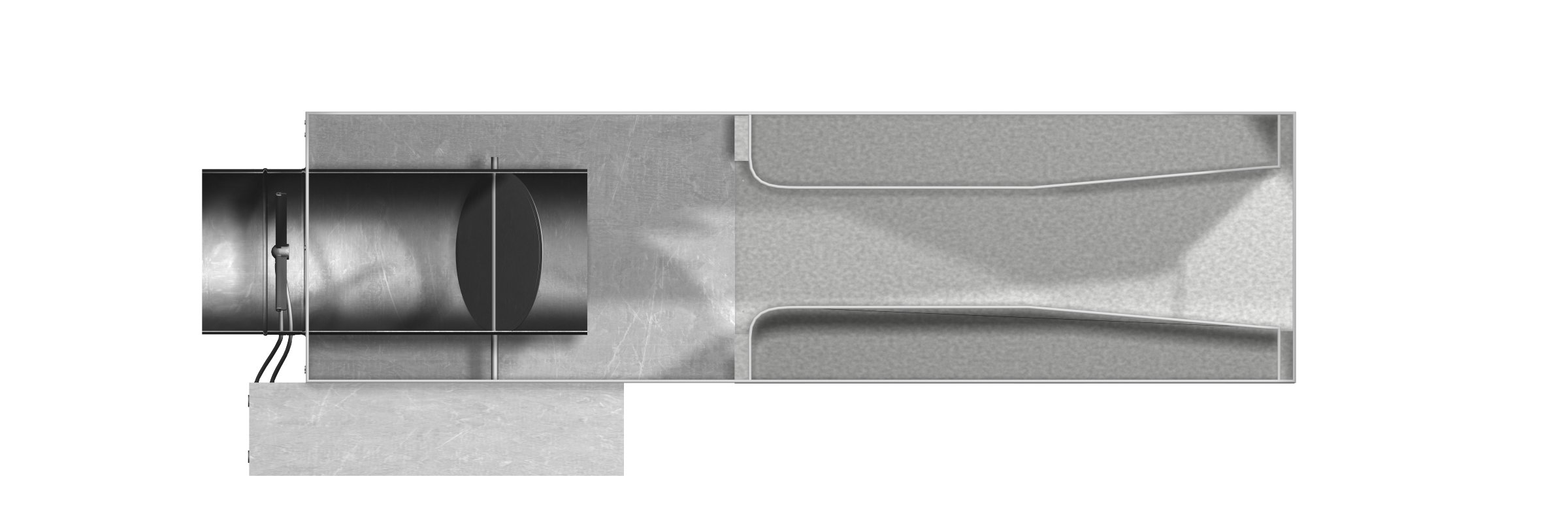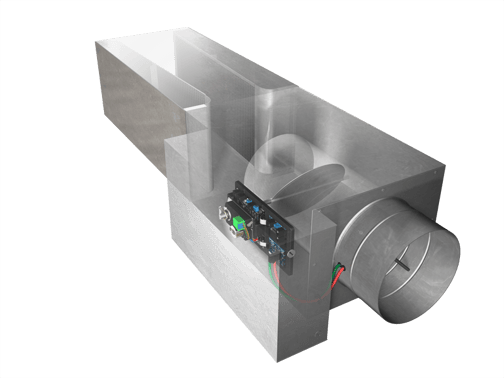Optimal Sound Reduction for Terminal Units
Terminal units influence a building occupant’s experience through heating, cooling and acoustics. Price offers attenuators and silencers as two different methods to reduce a terminal unit’s operating sound level. An attenuator reduces sound levels by utilizing a section of duct lined with acoustical media whereas a silencer utilizes both baffling and acoustical media to break sound waves and reduce the sound level leaving the unit. Although attenuators may suit a project depending on its acoustical requirements and pricing, silencers offer optimal sound reduction.
Price offers two types of silencers to treat terminal unit acoustics: the stand-alone silencer installed downstream of a terminal unit and the integral silencer. The word integral is used to describe these silencers because they are integrated into silent-style terminal units. Figure 1 below displays an SDVQ, which is a base model SDV (Single-Duct Terminal Unit) equipped with an integral silencer.
 |
 |
| Figure 1: SDVQ – SDV equipped with an integral silencer |
Terminal units equipped with integral silencers are tested as an assembly to ASHRAE Standard 130, Laboratory Methods of Testing Air Terminal Units and are certified to AHRI Standard 880, Performance Rating of Air Terminals. This allows for the generation of cataloged sound performance resembling the entire operational unit assembly. The unit is tested using inlet and outlet conditions that represent the conditions achievable in a jobsite: three equivalent duct diameters of straight duct upstream of the unit and two and a half equivalent duct diameters downstream of the unit.
Stand-alone silencers are installed downstream of terminal units, an illustration of which can be seen in figure 2.
 |
| Figure 2: SDV equipped with a stand-alone silencer |
Stand-alone duct silencers are tested to ASTM E477, Standard Test Method for Laboratory Measurements of Acoustical and Airflow Performance of Duct Liner Materials and Prefabricated Silencers. This standard for testing stand-alone duct silencers requires five equivalent duct diameters of straight duct upstream of the unit and 10 equivalent duct diameters downstream of the unit. Installing this silencer in an alternative configuration can lead to variation from cataloged insertion losses.
One major benefit of using integral silencers over stand-alone silencers is that the installation conditions of a unit with an integral silencer match the condition in which it was tested; sound levels measured per ASHRAE 130-2008 are expected when the unit assembly is installed in the field. Conversely, stand-alone silencers produce tested insertion losses only when they are installed under the same conditions they were tested in.
For more information regarding the benefits or the application of integral silencers, please visit our website or reach out to the Air Moving team at airmovement@priceindustries.com to speak with a product application specialist.



